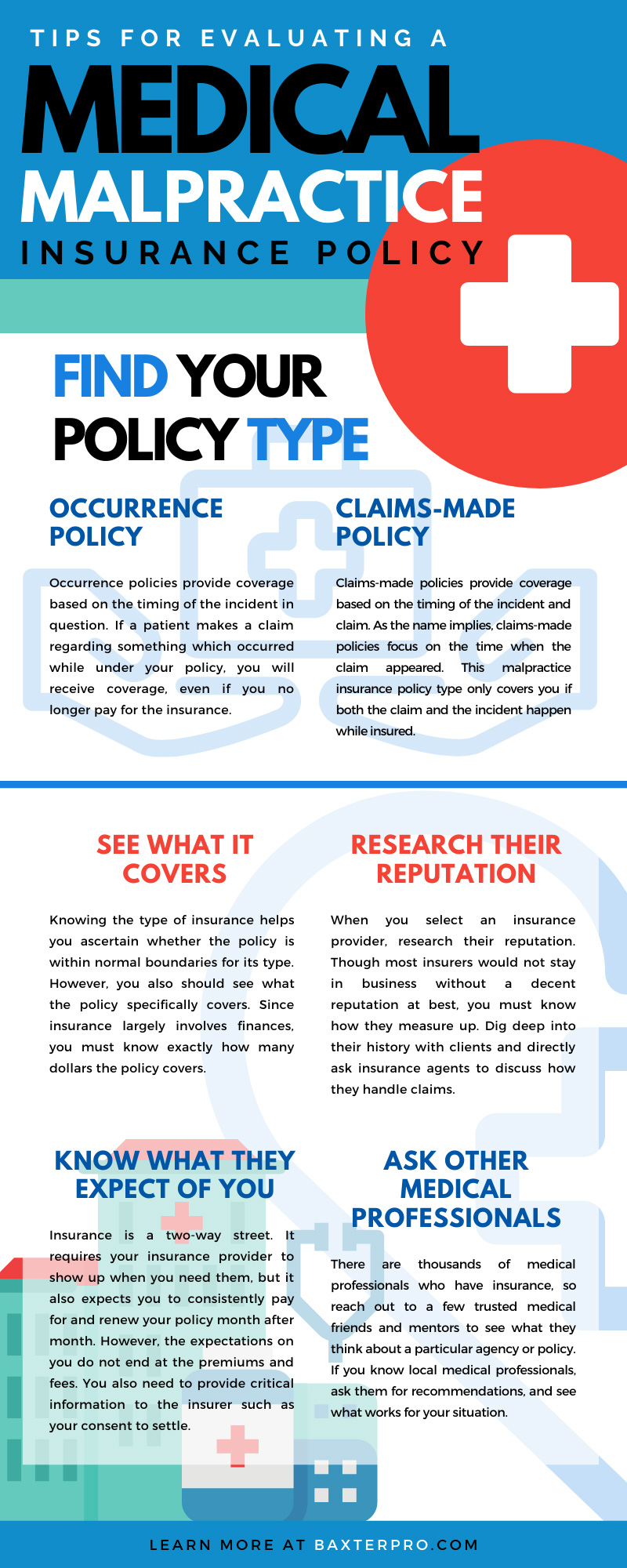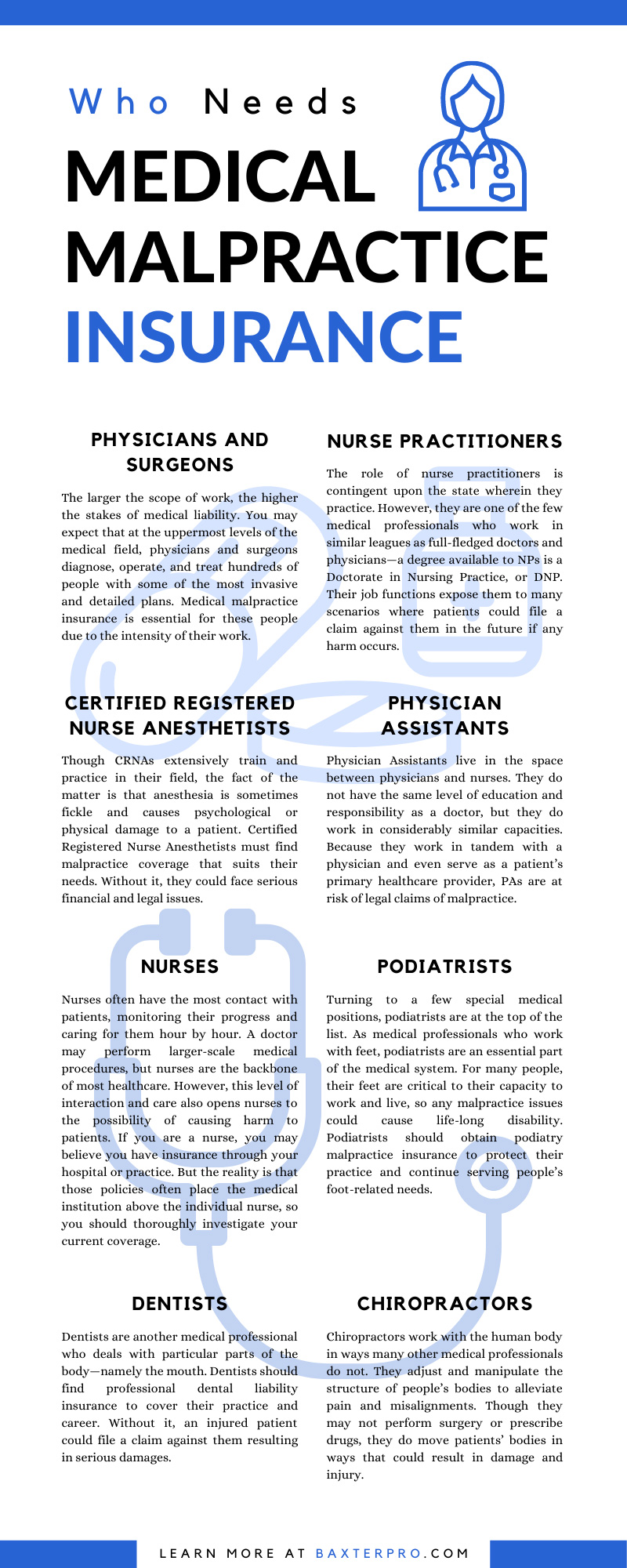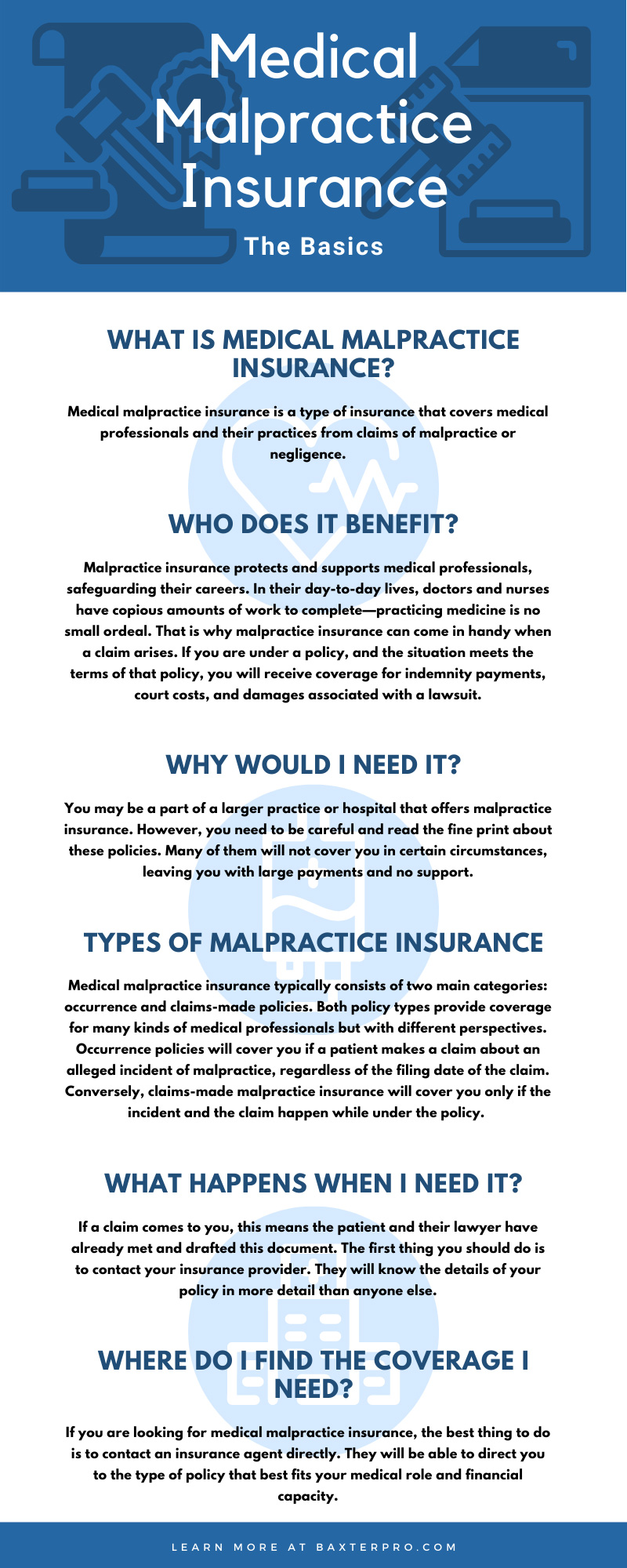No matter what realm of medicine you work in, you need professional liability protection. For medical professionals, this typically means a medical malpractice insurance policy. Here are a few tips for evaluating a medical malpractice insurance policy.
Understand What Malpractice Insurance Is
The first step in policy evaluation is research. You must know what medical malpractice insurance is to adequately assess it. Malpractice insurance is a form of professional liability insurance tailormade for medical professionals. These policies cover doctors, nurse practitioners, and certified registered nurse anesthetists alike in legal matters. The nature of medicine opens practicing professionals to claims made by patients about inadequate, incompetent, or malicious care. If you receive a claim from a patient, your insurance will help cover the costs as delineated in your specific policy.
Find Your Policy Type
When you evaluate insurance, you must know what kind of policy you want or have. Medical malpractice insurance typically comes in two formats: occurrence policies and claims-made policies, each with its specific parameters.
Occurrence Policy
Occurrence policies provide coverage based on the timing of the incident in question. If a patient makes a claim regarding something which occurred while under your policy, you will receive coverage, even if you no longer pay for the insurance. Since the incident happened beforehand while paying for the insurance, you will reap the benefits of the policy.
Claims-made Policy
Claims-made policies provide coverage based on the timing of the incident and claim. As the name implies, claims-made policies focus on the time when the claim appeared. This malpractice insurance policy type only covers you if both the claim and the incident happen while insured. Unlike occurrence policies, you lose any retroactive coverage once you end the policy.
See What It Covers
Knowing the type of insurance helps you ascertain whether the policy is within normal boundaries for its type. However, you also should see what the policy specifically covers. Since insurance largely involves finances, you must know exactly how many dollars the policy covers. As with all insurances, medical malpractice insurance coverages vary by location, professional role, policy type, and provider. The best course of action is to contact insurance providers and ask them for details. If you have any questions about what your coverages should include, reach out to our team of insurance professionals at Baxter & Associates.
When you call an insurance agent, you will want to ask about specific coverage items such as the defense costs. During any malpractice case, you will likely have extensive legal fees, attorney fees, and expert witness fees, not to mention court costs. Defense coverage will list exactly what they cover and how much they back you financially. Also, ask them about their liability limits. Though they likely have tiers depending on your premiums, it is important to know their baseline limits. This way, you can compare offers to find the best rates for the most coverage.
Know What They Expect of You
Insurance is a two-way street. It requires your insurance provider to show up when you need them, but it also expects you to consistently pay for and renew your policy month after month. Like all services you pay for, you should evaluate how the insurance works for you professionally and determine if there are better financial solutions available. However, the expectations on you do not end at the premiums and fees.
You also need to provide critical information to the insurer such as your consent to settle. This agreement is critical to understand as a medical professional. In the event a patient makes a claim against you, the option exists to consent to settle the case with a financial or equivalent payout. Your insurance provider covers you monetarily, so they may want to determine how much to pay and how they conduct the transactions. A consent to settle agreement either establishes your consent as necessary to settle or allows the insurer to settle on your behalf. Depending on your reputation and circumstances, you may or may not want this as part of the deal so be sure to know what insurance agencies expect of you.
Research Their Reputation
When you select an insurance provider, research their reputation. Though most insurers would not stay in business without a decent reputation at best, you must know how they measure up. Dig deep into their history with clients and directly ask insurance agents to discuss how they handle claims. When you know more about their track record, you can either move on or rest assured you chose well. As you research their reputation and company information, also check for any discounts or promotions, they could help you save money in the long haul.
Ask Other Medical Professionals
There are thousands of medical professionals who have insurance, so reach out to a few trusted medical friends and mentors to see what they think about a particular agency or policy. If you know local medical professionals, ask them for recommendations, and see what works for your situation. For example, if you are a nurse practitioner moving to a new state and switching policies, research a malpractice insurance plan for nurse practitioners like ours at Baxter & Associates and ask medical workers in your new region about who they use.
Make a Decision
After all the evaluation and consideration, you must decide on a policy. This can be hard to do when faced with similar options at similar rates, but go with the agency you trust most. Whoever you believe you can rely on in financial and legal distress is who you should select. If you find yourself wanting different coverage in the future, you can either look to increase your premiums or locate better options elsewhere.
Use these tips for evaluating a medical malpractice insurance policy and find the best solution for your needs. Our insurance team at Baxter & Associates can help you find the right policy for your specialization and practice today!

















